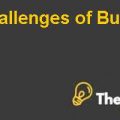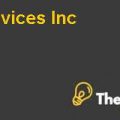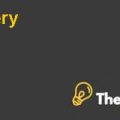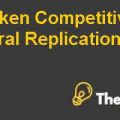Yale University Investments Office Case Study Solution
Problem Statement
The problem that is faced by Yale Investments Office is to decide that whether to continue to allocate the bulk of the funds of the endowment to the illiquid investments such as real estate, private equity and hedge funds. In order to make the final recommendation we need to consider the benefits and risks associated with different asset allocation strategies.
Case Analysis
First we begin with the discussion of the investment philosophy of the Yale Investments Office.
Investment Philosophy of Office
The investment philosophy was driven by five main investment principles that are shown below:
- Holding a diversified portfolio
- Strong belief of investing in the equities
- Using the outside managers for most of the investments
- Seeking new opportunities in the less efficient markets
- Not ignoring the implicit and explicit incentives of the investment managers.
The first principle is based on risk diversification and holding a portfolio of different investment through which the overall risk for the fund could be minimized. The exposure to specific assets classes is limited by diversification and the deviation of the returns of the endowment is also reduced. The second principle of the investment philosophy of the company is based on the research conducted by Swensen that private and public equity is a good form of investment and they provided with high returns even they have been adjusted for the inflation as compared to the bond returns that are eroded by inflation.
Yale University Investments Office Harvard Case Solution & Analysis
The third principle was based on the thinking of Swensen who believed that by picking up good managers, good returns could be generated by the office by managing the investments through outside managers. The office would then only be managing the fixed income investments and they can give more time and attention to the outside managers. The third principle focused on generating more returns from the less efficient markets. This is because excess returns could be generated in these markets because of the lack of the publicly available information that is highly critical for making the decisions.
In this way, the endowment would also become less liquid than the others. It would also create new opportunities for the fund to generate excess returns. Finally, if we look at the fifth principle then we can see that it is closely related to the third principle. According to Swensen, there were a number of investment conflicts between the managers that were owned by large financial institutions. Therefore, the Yale Investment Office wanted to keep those managers that were ready to work on the basis of a different type of the compensation structure. This structure would reward the managers on the basis of the magnitude of the returns that were generate by them rather than rewarding them for managing a large class of assets.
Asset Allocation
The mean variance analysis is used by the Yale Investment Office for making all the asset allocation decisions but it also put some limitations on the solutions by placing limits on the amount or percentage of the asset allocation to specific asset classes so that the diversification could be achieved for the fund. This is because, the optimization model of the company at times left out the complete asset classes. Most of the asset classes were treated as hedges against the worst case scenarios.
The Yale Investment Office also knew that the relationships among all the different asset classes would change over time and they cannot remain static, therefore, it was important to place limits on the asset classes. The Yale Investment Office also rand Monte Carlo Simulations for reducing the risk in the proposed portfolios. The spending rates of the Yale Investment Office were increased as a result of the success of the Office between 1992 and the year 2004. The fund allocated more investment to those asset classes that yielded higher average returns. The rationale for the asset allocations is described for each asset class below:
- Bonds and Cash: Investment in cash and bond were used to hedge against the volatility of the market. The maximum allocation to this asset class was 5% as the market was considered efficient but it produced no advantage by having the outside managers.
- Foreign and Domestic Equity: 25% of the endowment was allocated to the publicly traded equities and the Yale Investment Office made a decision that the passive index investments would not form part of this. The foreign equity investment percentage was higher than domestic equity investment because it presented with it new opportunities by investing in the growing economies of the world such as Eastern Europe, Latin America and Asia.
- Real Assets:The Yale Investment Office allocated around 27% of its investments to the real assets as they were the most liquid asset class. The investment horizon for this asset class was long and the Yale Investment Office could take advantage of the different deals to generate higher returns over the future years..................
This is just a sample partial case solution. Please place the order on the website to order your own originally done case solution.










